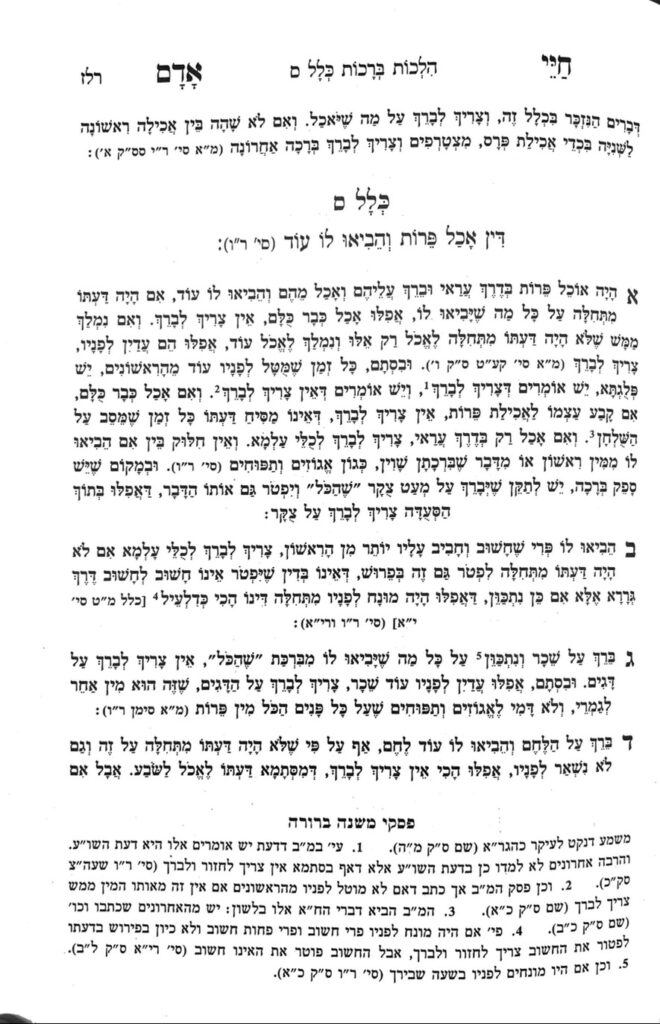We are continuing with an introduction to Klal 60. We learned that one of the levels of intent a person could have at the time of their bracha is stam daas. There are three other criteria which will be taken into consideration when a person has such daas.
- The first is what is currently on the table, known as lefanav. When one has stam daas, there is reason to say that their bracha will cover everything which is in front of them.
- The second criteria is whether more food is brought to the table. We will further discuss whether there is a difference if the items brought to the table were more of the exact food item or foods of the same bracha. We will also discuss whether this idea of more food brought to the table extends to drinks as well.
- The third criteria is whether these items were brought while the first item was still being consumed, or after it was finished.
We will also learn that the concept of extending brachos can only work from a more choshuv item to a less choshuv item, but not the other way around. Thus, for example, if one made a bracha on an item of the shivas haminim with stam daas, it can extend to an apple, but not the other way around.
Summary
- When a person has stam daas, there are three criteria which are taken into consideration in determining whether their bracha can extend to other foods:
- Whether the items were lefanav at the time of the bracha
- If more food is brought to the table, what type of food is it
- If more food is brought to the table, when it is brought
- Extending brachos with stam daas will only work from a more choshuv item to a less choshuv one.



